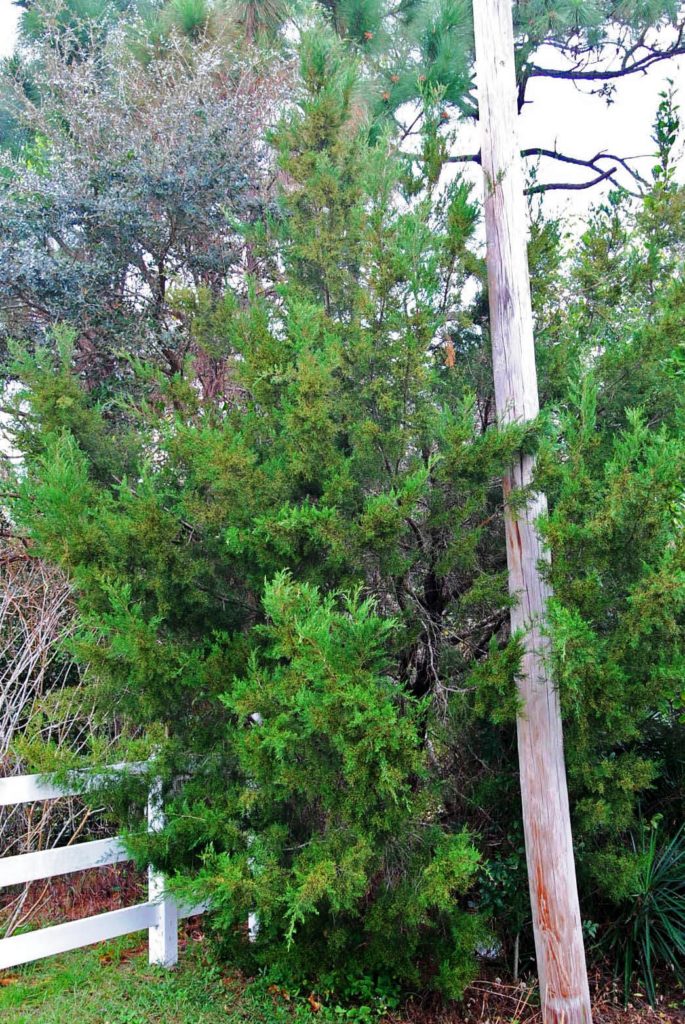
Southern Red Cedar
Juniperus silicicola
Our Southern Red Cedar, which has made friends with this telephone pole, is found from North Carolina to Central Florida and also west along the Southern United States to California.
It can grow to 50 feet or more and be limbed up to make a wind resistant street tree or kept as a round or pyramid shaped windscreen. Give it several feet of space from the nearest sidewalk or road, as the branches of young trees are wide and go to the ground.
Southern Red Cedar is dioecious, producing male or female flowers on separate trees. The female flowers are wind pollinated, so it is necessary to have a male tree up wind (southeast) of a female one. I find that female plants are rare, so you may want to purchase an older tree in fruit to make sure you have a female or one that is grown from a female cutting.
The small, resinous fruit has a bluish covering which is composed of wild yeasts. A couple of berries can be added to your sourdough starter for a few hours and then removed. Eating more than a couple of berries may cause stomach problems. See this article for more info.
Bobwhite, mourning doves, cedar waxwings and 50 other birds feed on the berries. The needles are sharp and dense which makes this an excellent tree for birds to nest in because predators will stay out of it.
Southern Red Cedar is found on coastal dunes and along the edge of saltmarshes. They are salt air and water tolerant and will grow anywhere in Florida. It does not occur in South Florida naturally, yet does well here.
Try a salt marsh theme when planting this tree. Mix it with Saw Palmetto, Wax Myrtle, Saltbush, Sand Cordgrass, both species of Beach Elder, Yaupon Holly, Dahoon Holly, Christmas Berry and Sea Oxeye. Place Slash pine, Southern Magnolia, and various oaks in the background, far enough away that they won’t crowd the cedars.
A coastal theme includes, Southern Magnolia, Red Bay, Hackberry, Tough Bumelia, Simpson Stopper, Yaupon Holly, Live Oak, Saw Palmetto, American Holly and many beach grasses and wildflowers.
If your tree becomes too tall, try removing a portion of the main leader back to a side branch at an appropriate height and encourage a wind swept look. In North Florida, the larva of the juniper hairstreak butterfly feeds on the foliage.